In 2025, the importance of website security is no longer a luxury—it is an absolute necessity. With cyber threats growing more sophisticated every day, businesses of all sizes must prioritize protecting their online assets. From small blogs to massive e-commerce platforms, every site is now a potential target for hackers, data breaches, and malware attacks.
Failure to implement strong security measures can lead to severe consequences, including financial losses, damaged reputations, legal issues, and customer trust erosion. A single security incident can wipe out years of brand building in just a few hours. In today’s digital-first world, users expect websites to offer not just seamless experiences but also secure environments.
Proactively investing in website security sends a powerful message to your audience and partners: you value their data and their safety. It also aligns with search engine expectations, as Google increasingly favors secure sites in its rankings. In short, strong security practices are critical to both survival and growth in 2025’s digital economy.
Understanding the Most Common Cyber Threats to Modern Websites

Modern websites face a diverse range of cyber threats, from classic malware attacks to sophisticated ransomware campaigns. Some of the most common dangers include phishing scams, SQL injection attacks, cross-site scripting (XSS), and distributed denial-of-service (DDoS) attacks. Each type of threat exploits different vulnerabilities, often targeting outdated software, poor password policies, or unsecured connections.
Understanding these threats allows businesses to take a proactive approach to defense. For instance, recognizing the signs of a phishing attempt or implementing WAFs (Web Application Firewalls) against SQL injections can significantly reduce risk exposure. Staying informed about new forms of cyberattacks is just as crucial as defending against known threats.
A comprehensive security strategy involves regular vulnerability assessments, employee training, robust access controls, and continuous monitoring. By addressing cyber threats from multiple angles, organizations can create a resilient digital environment that protects both their internal operations and their users’ sensitive data.
The Critical Role of SSL Certificates in Website Security
SSL certificates are no longer optional; they are essential pillars of website security and user trust. By encrypting the data transferred between the user’s browser and the server, SSL certificates ensure that sensitive information, such as login credentials, personal details, and payment information, remains protected from interception.
Beyond securing data, SSL certificates also play a major role in SEO and user experience. Websites without HTTPS are now flagged by browsers as “Not Secure,” which can deter potential customers and damage brand credibility. Additionally, Google uses HTTPS as a ranking signal, giving preference to secure websites in search results.
Implementing and maintaining a valid SSL certificate is one of the simplest yet most powerful steps you can take to secure your site. Regularly renewing the certificate, choosing the right type (such as EV SSL for e-commerce sites), and ensuring full HTTPS adoption across all pages solidify your website’s security framework.
How a Secure Hosting Environment Enhances Site Protection

Your hosting environment serves as the foundation of your website’s security. Even the best on-site measures can fail if the server infrastructure is weak, misconfigured, or outdated. Choosing a secure hosting provider means gaining access to firewalls, DDoS protection, malware scanning, regular updates, and expert technical support.
Shared hosting solutions may be cost-effective, but they expose websites to risks associated with neighboring accounts. In contrast, VPS servers, dedicated servers, or managed cloud environments offer better isolation, resource control, and security features. These types of hosting options drastically reduce the risk of cross-site contamination and downtime.
In 2025, it’s not enough to ask, “Is my website secure?” — you must also ask, “Is my hosting secure?” A secure server environment works hand in hand with your website’s internal defenses, providing a multi-layered approach that guards against a broader range of cyber threats.
Importance of Regular Website Backups for Risk Mitigation
Despite your best efforts to secure your website, no system is invulnerable to attacks, accidents, or technical failures. That’s why regular website backups are a fundamental part of any robust security strategy. A backup acts as a safety net, allowing you to quickly restore your site in case of data loss, cyberattack, or server crash.
Without recent and reliable backups, a hacked or corrupted site could mean days—or even weeks—of downtime and lost revenue. Worse, without backups, you might permanently lose valuable content, customer data, and transaction history. The financial and reputational damages can be devastating.
Modern backup solutions often include automated scheduling, incremental backups, off-site storage, and easy one-click restorations. By setting up a proper backup system, you ensure that even if the worst happens, you can recover your operations swiftly and minimize damage to your business.
Setting Strong Password Policies to Strengthen Access Control
Passwords are often the first and sometimes the only line of defense between a hacker and your website’s sensitive areas. Weak or reused passwords are a major vulnerability that attackers readily exploit using techniques like brute force attacks and credential stuffing. A strong password policy is essential for minimizing these risks.
An effective password policy enforces complexity (mixing uppercase, lowercase, numbers, and symbols), length (at least 12-16 characters), and regular updates. Additionally, administrators should implement tools like password managers and monitor for compromised credentials on dark web databases.
Organizations must educate employees and users alike on password best practices and reinforce security with technologies such as two-factor authentication (2FA). When combined, these measures form a powerful barrier that greatly enhances access control and overall site security.
How to Protect Your Website from DDoS Attacks Effectively

Distributed Denial of Service (DDoS) attacks are among the most disruptive cyber threats, capable of overwhelming your website’s servers with malicious traffic and taking your entire site offline. As these attacks become more sophisticated and accessible, proactive defense has become a necessity for every serious website owner.
Effective DDoS mitigation starts with choosing a hosting provider that offers DDoS protection services, such as traffic monitoring, rate limiting, and filtering suspicious traffic through advanced firewalls. Adding a Content Delivery Network (CDN) like Cloudflare can also help absorb and mitigate attack traffic before it reaches your servers.
It’s important to develop a detailed incident response plan as well. By setting traffic thresholds, configuring failover strategies, and partnering with security experts, you ensure your website remains operational even under attack. Proactive measures not only protect availability but also preserve your brand’s credibility in the face of cyber threats.
The Direct Connection Between Website Speed and SEO Rankings
Website speed is no longer a luxury feature—it’s a critical ranking factor in modern SEO. Google’s Core Web Vitals initiative has placed performance metrics like page loading times, interaction readiness, and visual stability at the center of search engine optimization. A slow website not only frustrates users but also signals to Google that your platform may not provide the best possible user experience. This, in turn, can lead to lower rankings, reduced organic traffic, and missed business opportunities. In a competitive digital market, even a one-second delay in loading time can cost significant revenue and credibility.
Beyond search engines, real users have high expectations regarding speed. Studies show that most visitors expect a website to load in under 3 seconds, and anything slower increases bounce rates dramatically. Every additional second can result in a 7% loss in conversions, meaning that optimization isn’t just about SEO—it directly impacts your bottom line. High-speed websites engage users better, encourage deeper navigation, and increase the likelihood of returning visitors and successful transactions.
Therefore, optimizing your site for speed is a multidimensional necessity. Techniques like minimizing HTTP requests, leveraging browser caching, optimizing images, implementing lazy loading, and using modern content delivery networks (CDNs) all contribute to achieving faster load times. Businesses that invest in performance optimization enjoy higher rankings, improved user satisfaction, and stronger overall brand loyalty in an increasingly demanding digital world.
How CDN Integration Improves Both Website Speed and Security
A Content Delivery Network (CDN) is one of the most powerful tools available to enhance both the speed and security of your website. By distributing content across a global network of servers, CDNs reduce the physical distance between users and the resources they are trying to access. This minimizes latency, accelerates load times, and ensures that users experience fast, seamless interactions regardless of their geographic location. Sites leveraging CDN technology are consistently faster and more resilient than those relying solely on a single origin server.
Beyond performance enhancements, CDNs offer a formidable layer of security. Many modern CDNs include built-in DDoS protection, Web Application Firewalls (WAFs), and bot mitigation technologies. These features actively monitor incoming traffic, identify suspicious behavior, and block malicious requests before they can impact your origin server. In essence, a CDN acts as a shield, absorbing and neutralizing potential cyber threats before they can affect your website’s functionality or reputation.
Integrating a CDN is often straightforward, but the selection of the right provider and the correct configuration are crucial for maximizing benefits. Factors such as the provider’s global presence, security protocols, pricing structure, and compatibility with your existing infrastructure must be evaluated carefully. When properly implemented, a CDN not only fortifies your website against performance bottlenecks and cyberattacks but also establishes a scalable foundation for growth and international expansion.
Why Malware Scanning and Removal Are Essential for Websites

Malware attacks are among the most insidious threats to website security, capable of silently compromising your systems without immediate visible signs. Hackers inject malicious code into your website to steal data, redirect visitors, or even hijack your site for criminal activities. Once infected, your website could be blacklisted by Google, resulting in an immediate and dramatic loss of traffic, reputation damage, and potential legal ramifications. Regular malware scanning is therefore a non-negotiable requirement for any serious website.
Early detection is critical because the longer malware remains undetected, the more extensive the damage becomes. Routine malware scanning tools systematically review files, databases, and scripts for suspicious changes, allowing you to address vulnerabilities before they spiral into full-scale breaches. Modern security solutions not only detect known threats but also use heuristic and behavioral analysis to spot novel or evolving forms of malware, offering a proactive defense mechanism.
However, detection alone is not enough. Immediate, thorough removal of malware is essential to restore your site’s integrity and regain user trust. This process often involves isolating infected files, patching exploited vulnerabilities, reinforcing security protocols, and sometimes restoring clean backups. In parallel, preventive measures like installing real-time monitoring, implementing WAFs, and educating users about common attack vectors strengthen your defenses against future threats, ensuring your website remains a safe environment for users and customers alike.
WAF (Web Application Firewall): Your Frontline Defense Strategy
A Web Application Firewall (WAF) serves as your website’s first line of defense against a wide variety of cyberattacks. Unlike traditional firewalls that focus on network-level threats, WAFs specialize in analyzing HTTP requests, filtering out malicious payloads, and preventing attacks that target the application layer, such as SQL injection, XSS, and remote file inclusion. A properly configured WAF can dramatically reduce the risk of successful breaches, ensuring that your website remains accessible, trustworthy, and compliant with security best practices.
Modern WAF solutions operate through either network-based, cloud-based, or host-based deployments, each offering its own strengths and trade-offs. Cloud-based WAFs, for instance, offer scalability and ease of management, while host-based versions provide granular control at the server level. No matter the deployment method, a well-maintained WAF continuously updates its threat intelligence databases, adapting to new tactics and emerging vulnerabilities without requiring manual intervention.
Implementing a WAF is not a set-it-and-forget-it process; it requires ongoing tuning, monitoring, and adjustment to align with your site’s evolving functionality. Security teams must routinely test WAF rules, refine filtering policies, and collaborate closely with developers to avoid false positives that could block legitimate traffic. A WAF is a living defense mechanism, not just a static barrier, and when integrated properly, it forms a crucial part of a layered security strategy that helps your website withstand even the most determined cyberattacks.
How to Optimize Website Images Without Compromising Website Speed

Images play a critical role in creating engaging and visually appealing websites, but poorly optimized images can be a major drag on performance. Large file sizes increase page load times, consume excessive bandwidth, and negatively impact both user experience and SEO rankings. Therefore, optimizing images is not just about reducing file size—it’s about maintaining a delicate balance between speed and quality, ensuring your site remains fast without sacrificing visual integrity.
Effective image optimization starts with selecting the right format. Modern formats like WebP and AVIF offer excellent compression ratios without significant quality loss compared to older formats like JPEG or PNG. Beyond format choice, tools like TinyPNG, ImageOptim, and built-in CMS plugins can automate compression during upload, maintaining optimal performance without requiring manual intervention from content teams. Adaptive techniques like responsive images (using srcset) allow you to serve appropriately sized images depending on the user’s device, saving even more bandwidth.
However, true optimization also involves smart design choices. Reducing the number of images, lazy loading below-the-fold visuals, and leveraging content delivery networks (CDNs) to serve images closer to users are all powerful techniques. By incorporating these strategies, you ensure your website remains highly performant while still delivering the visual richness users expect. In today’s mobile-first world, image optimization is no longer optional—it’s a critical component of both website security and optimization strategies.
Why Two-Factor Authentication (2FA) Is a Must for Admin Access
Two-Factor Authentication (2FA) is one of the most effective ways to secure administrative access to your website, offering a critical second layer of defense beyond traditional passwords. While strong passwords are important, they are still vulnerable to theft through phishing, keylogging, and brute-force attacks. 2FA significantly reduces the risk of unauthorized access by requiring users to provide two distinct forms of identification: something they know (password) and something they have (mobile device, security token).
There are various types of 2FA solutions available, from SMS-based codes to more advanced app-based authenticators like Google Authenticator or hardware security keys such as YubiKey. App-based authentication is generally more secure, as SMS methods can be intercepted or compromised through SIM-swapping attacks. No matter the method, enabling 2FA creates a formidable barrier for attackers, making it exponentially harder for them to breach your systems even if passwords are leaked.
Implementing 2FA across all critical access points—including CMS dashboards, hosting panels, FTP accounts, and email systems—is essential for a comprehensive security posture. In an era where data breaches can devastate a business in a matter of minutes, 2FA offers an affordable, user-friendly, and highly effective tool to minimize risk drastically. Businesses that neglect 2FA are increasingly seen as negligent in cybersecurity practices, putting both their brand and customers at serious risk.
Choosing Secure Server Locations for Better Data Protection

Server location isn’t just a matter of proximity or performance—it’s a vital factor in ensuring your website’s security, legal compliance, and resilience against geopolitical risks. Different countries have varying data protection laws, levels of government surveillance, and vulnerability to cyberattacks. Hosting your website in a country with strong privacy regulations and political stability can significantly enhance the safety of your user data and reduce exposure to regulatory risks.
For example, data centers located in countries like Germany, Switzerland, and Canada are often preferred for their stringent data protection laws and adherence to GDPR-like standards. In contrast, hosting in countries with weaker protections could expose your site and your users to surveillance, censorship, or arbitrary government actions. Evaluating server location also involves considering risks like natural disasters, infrastructure reliability, and connectivity quality to ensure consistent uptime.
When choosing a secure server location, it’s important to balance security, performance, and legal compliance. Using geo-redundant hosting solutions and multi-region deployments can further safeguard your data against localized incidents. Ultimately, making an informed decision about server location is not just a technical consideration—it’s a strategic move to reinforce trust, protect sensitive information, and future-proof your website’s growth and security in a dynamic digital landscape.
Why Managed Hosting Services Offer Better Security for Growing Websites
As websites grow and attract larger audiences, the complexity of managing security threats and system performance increases dramatically. Managed hosting services are designed specifically to address these challenges, providing businesses with expert technical support, proactive security monitoring, automatic software updates, and optimized server configurations. Unlike unmanaged hosting, where users are responsible for every security layer, managed providers take an active role in safeguarding websites against evolving threats.
A key advantage of managed hosting is access to specialized security tools that are often too costly or complex for small businesses to implement independently. Features like daily malware scanning, intrusion detection systems (IDS), application patching, DDoS mitigation, and real-time firewall management are usually bundled into managed hosting packages. These services ensure that vulnerabilities are addressed promptly and that your website’s defense mechanisms are always updated to counter the latest attack techniques.
Furthermore, managed hosting allows businesses to focus on core activities—content creation, marketing, customer engagement—without getting bogged down in the technicalities of server administration. By entrusting server management to security professionals, growing websites can maintain high performance, reduce downtime, and significantly lower the risk of breaches. In today’s digital economy, where trust and uptime are non-negotiable, managed hosting represents not just a convenience but a strategic investment in business continuity and brand reputation.
How Website Caching Enhances Speed and Defends Against Traffic Spikes
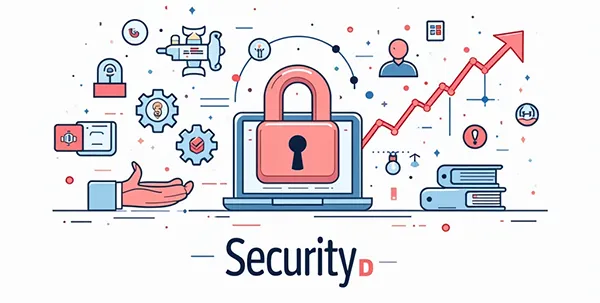
Website caching is a critical optimization technique that not only improves speed but also enhances resilience against sudden traffic surges. By temporarily storing copies of your site’s pages and serving them to visitors without repeatedly fetching them from the server, caching reduces load times dramatically. A fast-loading site improves user experience, boosts SEO performance, and helps maintain low bounce rates, especially during peak usage periods or promotional campaigns.
Caching mechanisms can operate at multiple levels, including browser caching, server-side caching, and Content Delivery Network (CDN) caching. Each type plays a role in minimizing server processing demands and accelerating content delivery. Server-side caching tools like Varnish, Redis, and Memcached handle dynamic content efficiently, ensuring that even complex websites remain responsive under heavy loads. Properly configured caching strategies can reduce server costs, increase scalability, and extend infrastructure lifespan without major hardware upgrades.
Importantly, caching also provides a protective layer against certain cyber threats like DDoS attacks. By reducing the number of direct requests to origin servers, caching makes it harder for attackers to overwhelm your infrastructure. In cases where malicious traffic targets non-cacheable pages, caching solutions paired with smart firewall rules can effectively filter and mitigate risks. Ultimately, strategic caching is not just about faster sites—it’s about building robust, future-proof digital platforms capable of withstanding the pressures of growth and threat landscapes.
Vulnerability Management: Quickly Detecting and Patching Website Risks
Vulnerability management is a systematic process that involves identifying, evaluating, treating, and reporting security weaknesses across your digital infrastructure. Modern cyberattacks exploit known vulnerabilities at an alarming rate, making it essential to adopt a proactive approach rather than reacting after an incident occurs. Through regular vulnerability scanning and risk assessments, organizations can stay several steps ahead of attackers and protect their websites from catastrophic breaches.
A robust vulnerability management program includes automated scans, manual penetration testing, patch management, and continuous monitoring. Automated tools such as Nessus or OpenVAS help identify common flaws like outdated plugins, insecure configurations, or missing security headers. However, true resilience comes from not just detection, but the speed and efficiency with which patches and updates are applied. Delayed patching often leads to zero-day attacks, where threat actors exploit vulnerabilities before developers can fix them.
Integrating vulnerability management into your DevOps and website maintenance workflows ensures security becomes an ongoing discipline, not a one-time task. Businesses should prioritize vulnerabilities based on potential impact, deploy patches promptly, and document remediation actions to maintain compliance with data protection standards. In the evolving threat landscape of 2025, effective vulnerability management isn’t optional—it’s a fundamental pillar of website security and risk reduction.
Why Relying Only on WordPress Security Plugins is Dangerous
WordPress security plugins offer an essential baseline of protection for websites, but relying solely on them can create a false sense of security. Plugins like Wordfence, Sucuri, and iThemes Security can block brute-force attacks, enforce strong passwords, and scan for malware, but they have limitations. No plugin can substitute for holistic security practices like server hardening, database encryption, or vulnerability management at the hosting level.
Plugins are often reactive rather than proactive, meaning they focus on detecting and responding to threats instead of preventing them altogether. Furthermore, outdated plugins themselves can become vulnerabilities, especially if they are not updated promptly or developed by less reputable sources. In complex attacks, hackers may specifically target poorly maintained plugins to gain access to administrative controls, bypass firewalls, or inject malicious code.
True WordPress security involves a multi-layered approach: strong server security, secure hosting, regular vulnerability scans, robust backup strategies, and active monitoring. It’s also critical to minimize plugin usage to only trusted, well-supported tools, while keeping the WordPress core and themes fully updated. Relying on plugins alone is like locking your door but leaving the windows open—comprehensive, layered defenses are the key to long-term website resilience and protection.
How to Monitor Website Uptime and Detect Security Incidents in Real-Time
Monitoring website uptime and detecting security incidents in real-time are vital practices for maintaining both site credibility and operational efficiency. Downtime affects user trust, SEO rankings, and revenue, while undetected security breaches can escalate into major disasters. Modern monitoring tools like Pingdom, UptimeRobot, and Datadog enable organizations to keep a constant watch over website performance, availability, and potential security anomalies.
Effective real-time monitoring involves setting up alerts for unusual behaviors such as increased server response times, unauthorized access attempts, or traffic spikes from suspicious sources. Integrating intrusion detection systems (IDS) with uptime monitoring creates a comprehensive view of website health and potential vulnerabilities. Early detection allows teams to respond rapidly, isolating compromised components, blocking malicious IPs, and mitigating threats before widespread damage occurs.
To maximize monitoring effectiveness, businesses should establish baseline performance metrics, configure escalation policies, and conduct regular incident response drills. Proactive monitoring isn’t just about knowing when something goes wrong; it’s about building a culture of continuous vigilance that ensures swift action, minimized downtime, and strengthened defenses against the ever-present threats in today’s digital ecosystem.
Advanced Website Hardening Techniques Beyond Basic Security
Website hardening refers to the process of reducing a website’s attack surface by systematically strengthening its defenses. While basic security practices like using SSL certificates and strong passwords are important, advanced hardening goes further by addressing hidden vulnerabilities at every level of your website’s stack. Techniques such as disabling unnecessary services, restricting file permissions, implementing security headers (like CSP, HSTS, and X-Frame-Options), and isolating user privileges significantly enhance protection.
Server hardening plays a pivotal role as well. This includes securing SSH access, disabling directory listing, implementing chroot jails, and setting up application firewalls that actively block suspicious activities. Database security should also be enhanced with techniques like encryption-at-rest, limited user privileges, and regular auditing to detect anomalies. Every additional layer complicates an attacker’s efforts, increasing the likelihood they will abandon the attempt in favor of an easier target.
Advanced hardening strategies also require ongoing maintenance and reassessment. New threats emerge regularly, so maintaining strong defenses is a continuous effort, not a one-time setup. Combining hardening with penetration testing, patch management, real-time monitoring, and user training creates a security-first environment where resilience is built into the website’s very foundation. Organizations that commit to advanced hardening are far better equipped to defend against the sophisticated attacks of tomorrow’s digital battlefield.

What is Page Speed? Learn the Basics from SEO Experts
Page speed refers to the amount of time it takes for a specific web page to load completely after a user requests it. It encompasses everything from server response time, resource loading (like images and scripts), and browser rendering. Fast page speed ensures that visitors can quickly access and interact with your website without unnecessary delays, significantly enhancing the user experience and engagement rates.
SEO experts emphasize that page speed is more than just a user-centric factor—it directly impacts search engine rankings. Google’s Core Web Vitals, specifically metrics like Largest Contentful Paint (LCP) and First Input Delay (FID), measure page speed performance. Websites that load faster are more likely to rank higher in search results, improving organic traffic and visibility.
Multiple technical aspects affect page speed, including hosting quality, image optimization, JavaScript execution, and caching strategies. Techniques such as compressing images, minimizing code, leveraging browser caching, and reducing server response times can all drastically boost load speed. Investing in these optimizations creates a more seamless browsing experience for users.
Furthermore, mobile-first indexing has made mobile page speed even more critical. With the majority of users accessing websites through smartphones, ensuring fast performance across devices is no longer optional. A slow mobile site risks losing both search rankings and a substantial share of potential customers.
Ultimately, improving page speed should be a continuous priority. Regular performance audits, monitoring through tools like Google PageSpeed Insights or GTmetrix, and ongoing technical enhancements ensure your website remains competitive and delivers the best possible experience to every visitor.
What is Schema Markup? + How to Implement It for SEO
Schema markup is a type of structured data that you add to your website’s code to help search engines understand the context of your content. Developed by Schema.org, it creates a shared vocabulary for information that search engines like Google, Bing, and Yahoo can easily interpret and present more attractively in search results through rich snippets.
Implementing schema markup can dramatically enhance your website’s SEO performance. It enables search engines to display additional information like ratings, reviews, FAQs, and event dates directly within the search results. This enhanced visibility can improve click-through rates, build trust, and establish your site as a more authoritative source.
To implement schema markup, you can manually add JSON-LD scripts into the HTML of your pages or use SEO plugins like Rank Math or Yoast for WordPress. Google’s Structured Data Markup Helper is also a valuable tool for beginners, allowing easy tagging of page elements without deep coding knowledge. Validation through the Rich Results Test ensures correct implementation.
There are different types of schema markup depending on the content—Product, Article, Local Business, Recipe, Event, and FAQ are among the most common. Selecting the right type of schema is critical to ensuring your pages are categorized correctly and benefit from rich results in SERPs.
Ultimately, schema markup bridges the gap between content creation and machine understanding. While it doesn’t directly boost rankings, it significantly improves your search presence, making your listings more informative, eye-catching, and likely to drive higher engagement from users.
What Should an XML Sitemap Look Like?
An XML sitemap is a file that lists all important pages of a website to ensure search engines can easily discover and crawl them. Think of it as a roadmap that guides Google’s bots through your site’s structure, highlighting which URLs are available for indexing and how they relate to each other. A clean, well-organized sitemap improves the efficiency of crawling and helps new or updated pages get indexed faster.
The ideal XML sitemap is simple, comprehensive, and free from errors. It should include only canonical URLs that you want indexed, excluding noindex pages, redirects, or duplicate content. Keeping URLs consistent in format (e.g., all lowercase and HTTPS) helps prevent confusion and improves crawlability.
Each entry in a sitemap should contain basic elements such as <loc> for location, <lastmod> for last modification date, and optionally <changefreq> and <priority>. These attributes give search engines additional information on how often content changes and which pages are more critical.
For large websites, it’s best practice to split the sitemap into multiple files if it exceeds 50,000 URLs or 50 MB. A sitemap index file can then reference these individual sitemaps. This approach helps maintain crawling efficiency and makes it easier to debug issues in specific sections of the site.
Submitting your XML sitemap to Google Search Console and Bing Webmaster Tools is crucial for visibility. Regularly updating the sitemap and monitoring its health ensures that search engines remain fully aware of your site’s structure and new content developments, reinforcing a strong SEO foundation.
Why is Flash Bad for SEO? 6 Reasons to Avoid Flash for SEO
Flash technology, once popular for interactive websites, is now considered highly detrimental to SEO and user experience. Search engines struggle to crawl and index Flash content effectively, meaning that important text, images, and navigation elements embedded in Flash often go unnoticed by bots. This results in poor visibility and missed ranking opportunities.
Modern web standards like HTML5, CSS3, and JavaScript offer better alternatives that are fully accessible, mobile-friendly, and SEO-compatible. Flash is also notorious for slow loading times, significantly impacting page speed scores and driving up bounce rates. In a digital landscape where performance matters, using Flash can severely handicap your website.
Flash content poses severe security risks as well. Adobe officially discontinued support for Flash Player in 2020, leaving any remaining installations vulnerable to exploits. Hackers often target Flash components to inject malware, which can lead to compromised websites, lost data, and Google penalties.
From a mobile perspective, Flash offers no compatibility. Mobile devices—especially iOS and Android—do not natively support Flash, meaning entire sections of your website could become inaccessible to most users. This lack of responsiveness directly harms SEO and user trust.
Given these issues, migrating away from Flash is essential. Rebuilding Flash-based components using modern, lightweight frameworks ensures better performance, accessibility, security, and SEO impact. Investing in updated technologies positions your website for long-term success and protects it from becoming obsolete.
Why is My Website Slow? 10 Reasons for Slow-Loading Websites
A slow-loading website can cripple user experience, hurt SEO rankings, and drive potential customers away. One common cause is poor server performance; if your hosting environment can’t handle traffic efficiently, page loads suffer dramatically. Upgrading to faster hosting solutions like VPS Server or managed hosting can solve this foundational issue.
Another major factor is unoptimized images. High-resolution graphics that are not properly compressed add unnecessary weight to pages, extending load times. Implementing image compression tools and using next-gen formats like WebP can make a substantial difference without sacrificing quality.
Heavy use of JavaScript and CSS files without minification or bundling also slows websites down. Every unnecessary HTTP request increases load times, so combining, minifying, and deferring non-critical resources is crucial for streamlining performance.
Inefficient caching strategies are equally detrimental. Without proper caching, returning visitors must reload the same assets every time, leading to wasted bandwidth and longer load times. Implementing server-side caching and browser caching policies significantly boosts page speed.
Other culprits include too many third-party scripts, bloated CMS themes, lack of content delivery networks (CDNs), poorly configured databases, excessive redirects, and outdated plugins or software. By systematically addressing these factors, you can transform a sluggish website into a fast, responsive platform that delights users and achieves higher SEO performance.
سوالات متداول
Page speed is a direct ranking factor for Google. Faster websites improve user experience, reduce bounce rates, and achieve better positions in search engine results pages (SERPs).

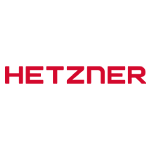
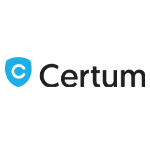
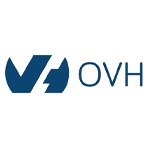



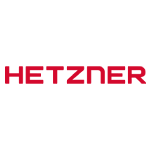
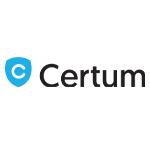
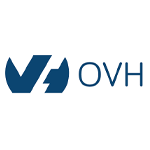
Leave a Reply